BLOG - Page 34
Recently created mixtures:

Sea-Buckthorn Macerated oil
February 7, 2019

Home made air freshener
June 29, 2016

Homemade Dog-rose distillate
June 28, 2016

Homemade jasmine distillate
June 22, 2016

Moxibustion treatment with Moxa stick
May 30, 2016

Face and body gentle oil cleanser
May 26, 2016
BLOG / LATEST ADDITIONS!
Damask Rose Essential Oil (Rosa Damascena) ☸ Essential oils ☸ Food / Cooking

 Rose is the king of flowers and Damask Rose is classified in old garden Roses. The origion of Damask Rose is Iran and the Middle East region and it is the national flower of Iran.
Rose is the king of flowers and Damask Rose is classified in old garden Roses. The origion of Damask Rose is Iran and the Middle East region and it is the national flower of Iran.
Rosa Damascena known as Gole Mohammadi is Iran of the most important species of Rosaceae family flowers. Rosaceae are well knownornamental plants and have been referred to as the king of flowers. At present time, over 200 Rose species and more than 18000 cultivars form of the plant have been indentified. Apart from the use of Rosa Damascena as prnamental plants in parks, gardens, and houses, they are principally cultivated for using in perfume, medicine and food industry.
Because of the low oil content in Rosa Damascena and the lack of natural and synthetic substitutes, essential rose oil of this plant is one of the most expensive ones in the world markets.
Rose Damascena is a perennial bushy shrub reaching approximately 1 to 2 meters in height with large, showy and colorful flowers. The leaves are imparipinnate and compuond with 5 - 7 leaflets. Its life span is up to 50 and economic pwriod is about 25 years.
There are evidences that Rosaceae family is an ancient plant. Some fossils of rose are found in America that are 30 million years old. The origin of Damask Rose is the Middle East and some evidences indicate that the origin of rose wather is Iran, but the origin of its fragrant oil and extracts is Greece. This plant is cultivated in alll over the world including Iran, Europe, Bulgaria, Turkey and India.
There are many evideces that cultivation and consumption of Rosa Damascena in Iran has a long history and Iran is one of its origins. It is believed that the crude distillation of Roses for the oil was originated from Persia in the late 7th century AD, and spread to the provinces of Ottoman Empire later in 14th centuy. Iran was the main producer of Rose Oil until the 16th century and exported it to all around the world.
It is a volatile oil obtained by distillation of the fresh flowers of Rose Damascena. The chief producting countries are Bulgaria, Turkey and Morocco, but not a major product in Iran. The oil is prepared in copper alembic stills by the peasant or in large factories under careful scientific control. Some 3000 parts of flowers yields only one part of oil. The oil is very expensive and very liable to adulteration.
Because of the low oil content in Rosa Damascena and the lack of natural and synthetic substitutes, Essential Rose Oil is one of the most expensive ones in the world markets.
Chemical composition:
This plant contains carboxylic acid, myrcene, vitamin C, kaempferol and quarcetin. Flowers also contain a bitter principle, tanning matter, fatty oil and organic acids. In Rosa Damascena Oil founded more than 95 macro- and micri-components. Among them, eighteen compounds represented more than 95% of the total oil. The identified compounds were: beta-citronellol (14,5-47,5%), nonadecane (10,5-40,5%), geraniol (5.5-18%), and nerol and kaempferol were the major components of the oil.
Phenolics possess a wide range of pharmacological activities, such as antioxidants, free-radical scavengers, anticancer, anti-inflammatory, antimutagenic and antidepressant.
Submitted by OperaDreamhouse (August 28, 2014)
Cucumber Seed Oil (Cucumis Sativus) ☸ Base oils ☸ Food / Cooking
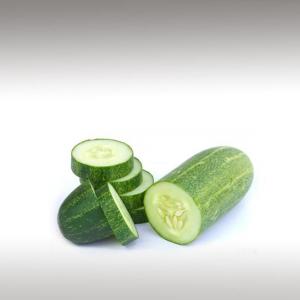

The oil itself is rich in Vitamins B1 and C, tocopherols, and phytopherols.
The Cucumber, or Cucumis Sativus, belongs to the Cucurbitaceae family of fruits, which also includes Melons, Squashes, and Gourds.
Cucumber Seed oil is perfect for making salad dressings (drizzling over salads) and mayonnaise or sprinkling on Cucumber salad.
The Cucumber, or Cucumis Sativus, belongs to the Cucurbitaceae family of fruits, which also includes Melons, Squashes, and Gourds.
Cucumber Seed oil is perfect for making salad dressings (drizzling over salads) and mayonnaise or sprinkling on Cucumber salad.
Submitted by OperaDreamhouse (August 18, 2014)
Cucumber Seed Oil (Cucumis Sativus) ☸ Base oils ☸ Medicine / Health


Cucumber Seed oil works as an anthelmintic, antibacterial, anti-inflammatory, antiseptic, demulcent, diuretic, febrifuge, purgative, vermifuge.
Cucumber oil is believed to be beneficial for treating some dry skin conditions, acne, boils, and for helping the skin to retain moisture.
The high tocopherol and tocotrienol content indicates that Cucumber Seed oil would be effective in defending skin cells from free-radical damage.
This oil boosts production of collagen, stimulates cell turnover, and increases skin's suppleness.
Cucumber Seed oil can also help with healing of many illnesses including lung, stomach, and chest problems.
Moistens the lungs for lung dryness for those who live in or are travelling in hot or dry climates.
This oil cools the blood and has a purifying effect on the intestines. It also kills tapeworms.
It is good in all cases where it is necessary to neutralize the excessive acidity, as in diabetes, gout, obesity, arthritis.
Cucumber Seed oil can also be used on the scalp. Many psoriasis and eczema sufferers will also experience outbreaks in the scalp area. A couple of drops of Cucumber oil can be massaged into the scalp to help keep symptoms under control.
Cucumber oil is believed to be beneficial for treating some dry skin conditions, acne, boils, and for helping the skin to retain moisture.
The high tocopherol and tocotrienol content indicates that Cucumber Seed oil would be effective in defending skin cells from free-radical damage.
This oil boosts production of collagen, stimulates cell turnover, and increases skin's suppleness.
Cucumber Seed oil can also help with healing of many illnesses including lung, stomach, and chest problems.
Moistens the lungs for lung dryness for those who live in or are travelling in hot or dry climates.
This oil cools the blood and has a purifying effect on the intestines. It also kills tapeworms.
It is good in all cases where it is necessary to neutralize the excessive acidity, as in diabetes, gout, obesity, arthritis.
Cucumber Seed oil can also be used on the scalp. Many psoriasis and eczema sufferers will also experience outbreaks in the scalp area. A couple of drops of Cucumber oil can be massaged into the scalp to help keep symptoms under control.
Submitted by OperaDreamhouse (August 18, 2014)
Cucumber Seed Oil (Cucumis Sativus) ☸ Base oils ☸ Beauty / Cosmetics


Suitable for sensitive, dry, combination, mature skin types.
Cucumber Seed oil can be effective in treating dry skin, eczema, psoriasis, acne and sunburned skin. It is a good choice for inclusion in formulations for revitalizing maturing skin. It is a good choice for inclusion in formulations for revitalizing maturing skin. It is excellent choice for use in moisturising formulations for the skin and hair care.
Cucumber Seed oil is very light with a fatty acid composition that helps to keep the skin fresh, soft and moisturized.
Cucumber Seed oil spreads easily and is absorbed relatively quickly by the skin. The oil is absorbed quickly by the skin and it spreads well without leaving a sticky skin feeling.
Studies indicate that phytosterols help the skin strengthen its lipid barrier. Restoring proper moisture balance, smoothing the skin's surface and improving skin elasticity. Phytosterols are also known for their ability to nourish and stimulate the skin cells to encourage regeneration of healthy skin cells.
The Vitamin B1 and C content of Cucumber oil is believed to help detoxify the skin's pores and, consequently, helps to eliminate some related conditions, such as acne or boils.
The tocopherols and phytopherols in this oil are believed to help restore the skin's moisture levels and help maintain proper balance. Cucumber Seed oil improving skin elasticity.
It could go into any skin care products for sensitive skin or around the eyes.
Another benefit of Cucumber Seed oil includes the properties of building elasticity of naturally curly hair, keeping it strong and preventing annoying breakage caused by weak, chemical and/or heat damaged hair.
The natural silica in the Cucumber Seed encourages new hair growth and helps to reduce the chances of hair loss.
Chlorinated water can inflict severe damage to the hair and applying Cucumber Seed oil will act like a shield by leaving a protective barrier on each hair strand so that the chemicals from pool water won't be absorbed by the hair. In addition, those who have brittle nails will also benefit from using this oil.
Cucumber Seed oil can lead to the accelerated healing of blemishes, pimples, and boils.
Cucumber Seed oil can be effective in treating dry skin, eczema, psoriasis, acne and sunburned skin. It is a good choice for inclusion in formulations for revitalizing maturing skin. It is a good choice for inclusion in formulations for revitalizing maturing skin. It is excellent choice for use in moisturising formulations for the skin and hair care.
Cucumber Seed oil is very light with a fatty acid composition that helps to keep the skin fresh, soft and moisturized.
Cucumber Seed oil spreads easily and is absorbed relatively quickly by the skin. The oil is absorbed quickly by the skin and it spreads well without leaving a sticky skin feeling.
Studies indicate that phytosterols help the skin strengthen its lipid barrier. Restoring proper moisture balance, smoothing the skin's surface and improving skin elasticity. Phytosterols are also known for their ability to nourish and stimulate the skin cells to encourage regeneration of healthy skin cells.
The Vitamin B1 and C content of Cucumber oil is believed to help detoxify the skin's pores and, consequently, helps to eliminate some related conditions, such as acne or boils.
The tocopherols and phytopherols in this oil are believed to help restore the skin's moisture levels and help maintain proper balance. Cucumber Seed oil improving skin elasticity.
It could go into any skin care products for sensitive skin or around the eyes.
Another benefit of Cucumber Seed oil includes the properties of building elasticity of naturally curly hair, keeping it strong and preventing annoying breakage caused by weak, chemical and/or heat damaged hair.
The natural silica in the Cucumber Seed encourages new hair growth and helps to reduce the chances of hair loss.
Chlorinated water can inflict severe damage to the hair and applying Cucumber Seed oil will act like a shield by leaving a protective barrier on each hair strand so that the chemicals from pool water won't be absorbed by the hair. In addition, those who have brittle nails will also benefit from using this oil.
Cucumber Seed oil can lead to the accelerated healing of blemishes, pimples, and boils.
Submitted by OperaDreamhouse (August 18, 2014)
Broccoli Seed Oil (Brassica Oleracea Italica) ☸ Base oils ☸ Food / Cooking
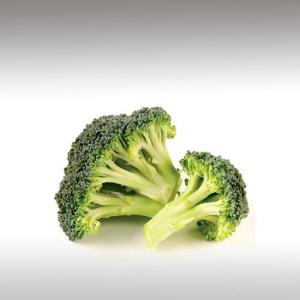

Broccoli Seed oil possesses an herbaceous aroma. Although aroma is very subjective. The recommended usage rate is 1 - 40%, and the aroma can certainly be toned down when blended effectively within your overall formulation. The oil is light, non greasy, and it is easily absorbed.
Chemical structure:
Palmitic - 3,25%
Oleic acid - 13,5%
Linoleic acid - 11,4%
Linolenic acid (alpha) - 9%
Eicosenoic - 6%
Erucic acid - 49%.
Chemical structure:
Palmitic - 3,25%
Oleic acid - 13,5%
Linoleic acid - 11,4%
Linolenic acid (alpha) - 9%
Eicosenoic - 6%
Erucic acid - 49%.
Submitted by OperaDreamhouse (August 18, 2014)
Broccoli Seed Oil (Brassica Oleracea Italica) ☸ Base oils ☸ Medicine / Health


Broccoli Seed oil contains Vitamin C. When it's not helping eliminate the free radicals that can contribute to cancer, the antioxidants in Broccoli Seed oil can help prevent hair loss. As a result, people who get enough Vitamin C usually have thicker, healthier hair.
Interestingly enough, recent studies have also suggested that Broccoli may help protect against skin cancer. Broccoli's anti-cancer compound. It is potentially cancer-fighting compounds, Broccoli is also rich in Vitamin K.
Broccoli sprouts aren't as high in nutrients as the florets, but they do have more potential cancer-fighting properties. The florets are full of vitamins and minerals and have shown in hundreds of studies to help reduce the risk of cancer by taming inflammation, protecting from oxidative damage, and helping the body flush out waste and toxins.
B Vitamins in Broccoli Seed oil can help It's also a part of a spectrum of vitamins that support physical and mental health. educe stress. It also contains a powerful substance that has to power to inhibit dihydrotestosterone, or DHT.
Broccoli Seed oil is very good for eczema, psoriasis, inflammatory skin condition.
Interestingly enough, recent studies have also suggested that Broccoli may help protect against skin cancer. Broccoli's anti-cancer compound. It is potentially cancer-fighting compounds, Broccoli is also rich in Vitamin K.
Broccoli sprouts aren't as high in nutrients as the florets, but they do have more potential cancer-fighting properties. The florets are full of vitamins and minerals and have shown in hundreds of studies to help reduce the risk of cancer by taming inflammation, protecting from oxidative damage, and helping the body flush out waste and toxins.
B Vitamins in Broccoli Seed oil can help It's also a part of a spectrum of vitamins that support physical and mental health. educe stress. It also contains a powerful substance that has to power to inhibit dihydrotestosterone, or DHT.
Broccoli Seed oil is very good for eczema, psoriasis, inflammatory skin condition.
Submitted by OperaDreamhouse (August 18, 2014)
Broccoli Seed Oil (Brassica Oleracea Italica) ☸ Base oils ☸ Beauty / Cosmetics


Suitable for dry, dull, oily, and mature skin types.
On the skin, these same fatty acids provide a greaseless hydration while forming a protective layer that traps in moisture and keeps skin hydrated all day long. The fatty acid content and structure of this oil makes it a very good oxidative stabiliser: it also has excellent moisturising properties and is non-greasy.
Full of Vitamin C and other nutrients, Broccoli Seed oil nourishes the skin and hair, leaving a radiant sheen that looks youthful and glowing. Recommended for younger and acne-prone skin types, this oil nourishes, balances, and provides skin with all the nutrients necessary for optimal functioning. In addition, it heals blemishes and reduces redness.
Broccoli Seed oil is high in erucic acid, an omega - 9 fatty acid that imparts a glow to skin and sheen and lustre to hair comparable to silicone. Broccoli Seed creates an amazing shine and gloss and is excellent to use as an emollient and moisturiser for dry, damaged and frizzy hair.
Broccoli oil is gaining recognition as a natural alternative to the silicon in shampoos, conditioners and styling products where high sheen and luster are desired. The excellent anti-oxidant profile makes it an easy substitute for the activity of silicones where the film forming activity results in a natural shine, and cuticle smoothing of the hair, while preventing oxidation. Light, non-greasy, and easily absorbed, it's actually similar in feel to the chemical silicones you'll find in other skin and hair-care products.
Brassica Oleraceae, is also an excellent choice for lip balms where it will offer natural shine and anti-oxidant protection.
It is very effective in blocking sunburns. Broccoli Seed oil also protects the skin from dangerous free radical damage. UV rays, environmental pollution.
Broccoli Seed oil helps counteract these aging factors. Essential fatty acids in the oil help hydrate skin, but they also deeply penetrate to provide lasting moisturization. It also gives shine and gloss to dull and lifeless skin.
An amazing benefit for those oily-skin types that predictably shy away from face oils.
It naturally helps reduce inflammation, easing redness and taming rashes and other inflammatory skin conditions. Broccoli is known for its nutritional value as a vegetable so it is not surprising that the oil will give nourishment to the skin and hair.
On the skin, these same fatty acids provide a greaseless hydration while forming a protective layer that traps in moisture and keeps skin hydrated all day long. The fatty acid content and structure of this oil makes it a very good oxidative stabiliser: it also has excellent moisturising properties and is non-greasy.
Full of Vitamin C and other nutrients, Broccoli Seed oil nourishes the skin and hair, leaving a radiant sheen that looks youthful and glowing. Recommended for younger and acne-prone skin types, this oil nourishes, balances, and provides skin with all the nutrients necessary for optimal functioning. In addition, it heals blemishes and reduces redness.
Broccoli Seed oil is high in erucic acid, an omega - 9 fatty acid that imparts a glow to skin and sheen and lustre to hair comparable to silicone. Broccoli Seed creates an amazing shine and gloss and is excellent to use as an emollient and moisturiser for dry, damaged and frizzy hair.
Broccoli oil is gaining recognition as a natural alternative to the silicon in shampoos, conditioners and styling products where high sheen and luster are desired. The excellent anti-oxidant profile makes it an easy substitute for the activity of silicones where the film forming activity results in a natural shine, and cuticle smoothing of the hair, while preventing oxidation. Light, non-greasy, and easily absorbed, it's actually similar in feel to the chemical silicones you'll find in other skin and hair-care products.
Brassica Oleraceae, is also an excellent choice for lip balms where it will offer natural shine and anti-oxidant protection.
It is very effective in blocking sunburns. Broccoli Seed oil also protects the skin from dangerous free radical damage. UV rays, environmental pollution.
Broccoli Seed oil helps counteract these aging factors. Essential fatty acids in the oil help hydrate skin, but they also deeply penetrate to provide lasting moisturization. It also gives shine and gloss to dull and lifeless skin.
An amazing benefit for those oily-skin types that predictably shy away from face oils.
It naturally helps reduce inflammation, easing redness and taming rashes and other inflammatory skin conditions. Broccoli is known for its nutritional value as a vegetable so it is not surprising that the oil will give nourishment to the skin and hair.
Submitted by OperaDreamhouse (August 18, 2014)
Frankincense Distillate (Boswellia Serrata) ☸ Herbal distillates ☸ Spiritual Practises
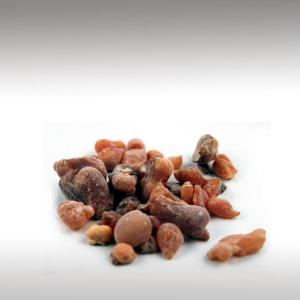

Frankincense Distillate good for meditation and connecting with guides. Promotes enlightenment, multidimensional awareness, transcendence. Dispels negativity. Associated with the Element of Fire.
Submitted by OperaDreamhouse (August 3, 2014)
Strawberry Seed Oil (Fragaria Ananassa) ☸ Base oils ☸ Base / General
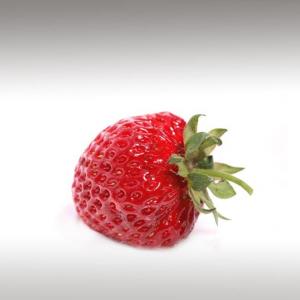

Strawberry (Fragaria Ananassa) belongs to the roseceae family and is a widely consumed fruit. As its genus name - Fragaria (meaning flavor) tells us, Strawberry has a distinct flavor. Originating in middle Europe, Strawberry has been brought to Japan by the Hollanders in the late Edo period. Now, Strawberry is a popular fruit also in Japan with an annual harvest of around 200,000 tons.
The Strawberry fruit was mentioned in ancient Roman literature in reference to its medicinal use. The French began taking the Strawberry from the forest to their gardens for harvest in the 1300s. Charles V. Frances king from 1364 to 1380, had 1,200 Strawberry plants in his royal garden. In the early 1400s western European monks were using the wild Strawberry in their illuminated manuscripts. The Strawberry is found in Italian, Flemish, German art, and English miniatures.
However, despite the fact that Srawberry is eaten together with the small seeds inside, components and functions of the seeds have not well been studied.
Strawberry seed oil is obtained from the grains of Strawberries by means of cold-pressing method and does not subsequently undergo the process of refining and filtration. It is a rich source of Vitamins, non-saturated fatty acids (omega - 3, omega - 6, omega - 9) and antioxidants(tocopherols,ellagic acid). Strawberry seed oil is also rich in ellagic acid, a polyphenol and antioxidant.
Strawberry seed oil is a sweet-smelling oil that is high in essential fatty acids. It is a stable oil, it has a shelf life of up to two years.
The Strawberry fruit was mentioned in ancient Roman literature in reference to its medicinal use. The French began taking the Strawberry from the forest to their gardens for harvest in the 1300s. Charles V. Frances king from 1364 to 1380, had 1,200 Strawberry plants in his royal garden. In the early 1400s western European monks were using the wild Strawberry in their illuminated manuscripts. The Strawberry is found in Italian, Flemish, German art, and English miniatures.
However, despite the fact that Srawberry is eaten together with the small seeds inside, components and functions of the seeds have not well been studied.
Strawberry seed oil is obtained from the grains of Strawberries by means of cold-pressing method and does not subsequently undergo the process of refining and filtration. It is a rich source of Vitamins, non-saturated fatty acids (omega - 3, omega - 6, omega - 9) and antioxidants(tocopherols,ellagic acid). Strawberry seed oil is also rich in ellagic acid, a polyphenol and antioxidant.
Strawberry seed oil is a sweet-smelling oil that is high in essential fatty acids. It is a stable oil, it has a shelf life of up to two years.
Submitted by OperaDreamhouse (August 2, 2014)
Broccoli Seed Oil (Brassica Oleracea Italica) ☸ Base oils ☸ Base / General


The word Broccoli comes from the Italian plural of Broccolo, which means "The flowering crest of a cabbage", and is the diminutive form of Brocco, meaning "Small Nail" or "Sprout".
Broccoli has large flower heads, usually green in color, arranged in a tree-like structure on branches sprouting from a thick, edible stalk. The mass of flower heads is surrounded by leaves.
The rare and precious Broccoli Seed oil is extracted from the tiny seeds of Broccoli by cold pressing . Broccoli belongs to the cruciferous family and is native to southern Italy, where it was cultivated by the Romans as a crop from wild cabbage.
Broccoli Seed oil comes from the seeds of the Broccoli plant and is cold pressed. Broccoli Seed oil is cold pressed from the seeds of Brassica Oleracea Italica to yield an extra virgin, unrefined, pale green oil. Broccoli Seed oil has a pungent odor with a slightly yellow tint.
The fatty acid profile of this oil provides excellent oxidative stability and non-greasy moisturizing properties. The fatty acid composition of Broccoli Seed oil is unique and is composed of approximately 50%Erucic acid(22:1). The oil is light, non greasy, and it is easily absorbed. Contains Over 50% of unsaturated acids. Mainly composed of Erucic acid (omega-9), oleic acid (omega-9) and linoleic acid(omega-6).
Broccoli Seed oil has good oxidative stability. For best shelf life, store in dark, cool environment away from heat, light and odor.
Broccoli has large flower heads, usually green in color, arranged in a tree-like structure on branches sprouting from a thick, edible stalk. The mass of flower heads is surrounded by leaves.
The rare and precious Broccoli Seed oil is extracted from the tiny seeds of Broccoli by cold pressing . Broccoli belongs to the cruciferous family and is native to southern Italy, where it was cultivated by the Romans as a crop from wild cabbage.
Broccoli Seed oil comes from the seeds of the Broccoli plant and is cold pressed. Broccoli Seed oil is cold pressed from the seeds of Brassica Oleracea Italica to yield an extra virgin, unrefined, pale green oil. Broccoli Seed oil has a pungent odor with a slightly yellow tint.
The fatty acid profile of this oil provides excellent oxidative stability and non-greasy moisturizing properties. The fatty acid composition of Broccoli Seed oil is unique and is composed of approximately 50%Erucic acid(22:1). The oil is light, non greasy, and it is easily absorbed. Contains Over 50% of unsaturated acids. Mainly composed of Erucic acid (omega-9), oleic acid (omega-9) and linoleic acid(omega-6).
Broccoli Seed oil has good oxidative stability. For best shelf life, store in dark, cool environment away from heat, light and odor.
Submitted by OperaDreamhouse (August 2, 2014)
Cucumber Seed Oil (Cucumis Sativus) ☸ Base oils ☸ Base / General


Cucumbers have been cultivated in Northern India for 3,000 years and were introduced to Europe by the Romans, but now grows on most continents.
Cucumber fruit is composed mostly of water: more than 96% of edible unpeeled fruit is water.
Cucumber Seed oil is cold pressed from the cleaned and dried seeds of Cucumbers. It is then carefully filtered to obtain a brilliant, clear yellow oil with a mild, fresh Cucumber aroma.
Cucumber Seed oil possesses a remarkable amount of phytosterols. Cucumber Seed oil contains a significant percentage of oleic acid and linoleic acid. Cucumber Seed oil contains a high levels of linoleic, fatty acid or omega 6.
The oil also contains notable amounts of oleic and palmitic fatty acids.
Cucumber fruit is composed mostly of water: more than 96% of edible unpeeled fruit is water.
Cucumber Seed oil is cold pressed from the cleaned and dried seeds of Cucumbers. It is then carefully filtered to obtain a brilliant, clear yellow oil with a mild, fresh Cucumber aroma.
Cucumber Seed oil possesses a remarkable amount of phytosterols. Cucumber Seed oil contains a significant percentage of oleic acid and linoleic acid. Cucumber Seed oil contains a high levels of linoleic, fatty acid or omega 6.
The oil also contains notable amounts of oleic and palmitic fatty acids.
Submitted by OperaDreamhouse (August 2, 2014)
Buriti Fruit Oil (Mauritia Flexuosa) ☸ Base oils ☸ Base / General
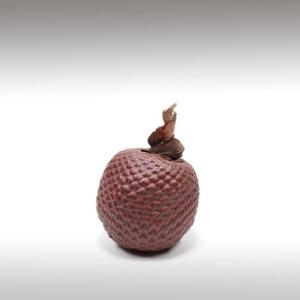

Mauritia Flexuosa, known as the Moriche palm, Ité palm, Ita, Buriti, Canangucho (Colombia), or Aguaje (Peru), is a palm tree. It grows in and near swamps and other wet areas in tropical South America. It has been reported from Trinidad, Colombia, Venezuela, Guyana, Suriname, French Guinea, Brazil, Ecuador, Peru and Bolivia.
Mauritia Flexuosa is an elegant tree which can reach up to 35 meters in height. The large leaves form a rounded crown. The fruit, which grows from December to June, is a chestnut colour and is covered with shiny scales. The yellow flesh covers a hard, oval, nut. The seeds float, and this is the means by which the palm tree propagates.
Moriche palm fruit is edible, has a high Vitamin C content, and used to make juice, jam, ice cream, and a fermented "wine". An oil high in Vitamin A is extracted from the pulp and is frequently used to treat burns because of its soothing qualities. Buriti oil is an orange-reddish oil extracted from the fruit of the moriche palm. The oil contains high concentrations of oleic acid, tocopherols and carotenoids, especially Beta Carotene.
Buriti fruit oil is considered to be one of the richest sources of beta-carotene, with levels exceeding that of carrot seed oil. Brasilian natives treat the buriti tree as sacred because it contains the nutrients and support needed to sustain life.
The Buriti oil is very rich in oleic acid (72,5%), a type of mono-unsaturated fatty acid that is abundant in Olive oil.
Approximately 60 female and 80 male buriti palms occur in one hectare. An adult palm can produce up to 200 kg of fruit, which can be processed into 30 kg of flour or 5 to 6 liters of finally extracted oil (the flour contains 22% oil). Assuming an average of 60 buriti palms per hectare, 300 to 360 liters of oil can be extracted per hectare. The reproductive cycle occurs every two years.
Mauritia Flexuosa is an elegant tree which can reach up to 35 meters in height. The large leaves form a rounded crown. The fruit, which grows from December to June, is a chestnut colour and is covered with shiny scales. The yellow flesh covers a hard, oval, nut. The seeds float, and this is the means by which the palm tree propagates.
Moriche palm fruit is edible, has a high Vitamin C content, and used to make juice, jam, ice cream, and a fermented "wine". An oil high in Vitamin A is extracted from the pulp and is frequently used to treat burns because of its soothing qualities. Buriti oil is an orange-reddish oil extracted from the fruit of the moriche palm. The oil contains high concentrations of oleic acid, tocopherols and carotenoids, especially Beta Carotene.
Buriti fruit oil is considered to be one of the richest sources of beta-carotene, with levels exceeding that of carrot seed oil. Brasilian natives treat the buriti tree as sacred because it contains the nutrients and support needed to sustain life.
The Buriti oil is very rich in oleic acid (72,5%), a type of mono-unsaturated fatty acid that is abundant in Olive oil.
Approximately 60 female and 80 male buriti palms occur in one hectare. An adult palm can produce up to 200 kg of fruit, which can be processed into 30 kg of flour or 5 to 6 liters of finally extracted oil (the flour contains 22% oil). Assuming an average of 60 buriti palms per hectare, 300 to 360 liters of oil can be extracted per hectare. The reproductive cycle occurs every two years.
Submitted by OperaDreamhouse (August 1, 2014)
Watermelon Seed Oil (Citrullus Vulgaris) ☸ Base oils ☸ Base / General
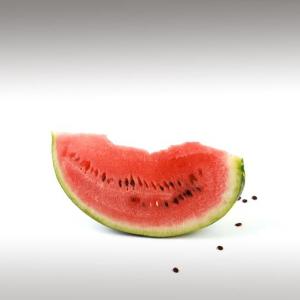

Melons are one of the prominent fruits grows and cultivated in Central Asia. Country like Egypt and Palestine extensively farm water melons. Basically Watermelons are originated from East Indies and tropical parts of Africa.
Watermelon tree is pretty tall and the fruits may weigh up to 30 pounds. The best thing about the Watermelon fruit is that it supplies food and water both at a time. Its juice pulp is very tasty and acts as the best substitute of natural drinks and food in these dry conditions.
Watermelon tree is pretty tall and the fruits may weigh up to 30 pounds. The best thing about the Watermelon fruit is that it supplies food and water both at a time. Its juice pulp is very tasty and acts as the best substitute of natural drinks and food in these dry conditions.
The Watermelon fruit varies in shape and color.
The seeds are black-redish in the pulp. The pulp is again reddish filled
with juice.
Watermelon is fruit of dry states and that is why mostly and naturally grows in these areas. Kalahari Deserts, the banks of Nile are some of the best locations to get the Watermelon.
Watermelon seed oil is extracted by pressing from the seeds of the Citrullus Vulgaris. It is particularly common in West Africa, where it is also called ootanga oil or Kalahari oil.
Watermelon is fruit of dry states and that is why mostly and naturally grows in these areas. Kalahari Deserts, the banks of Nile are some of the best locations to get the Watermelon.
Watermelon seed oil is extracted by pressing from the seeds of the Citrullus Vulgaris. It is particularly common in West Africa, where it is also called ootanga oil or Kalahari oil.
Watermelons probably originated almost 5,000 years ago in the Kalahari Desert of Africa where botanists have found its wild ancestors still growing. Watermelons migrated north through Egypt, and during the Roman era they were cultivated and prized.
Traditionally, the seeds are extracted from the seed casing, and dried in the sun. Once dried, the seeds are pressed to extract the oil. The high content of omega acidsand linoleic acid within the oil assist in the removal of excess sebum within the skin.
Watermelon seed oil contains high amounts of unsaturated fatty acids with linoleic and oleic acids as the major acids.
The major chemical constituents of this essential oil include: linoleic acid, oleic acid, Thiamin, riboflavin, niacin, Folic Acid, Vitamin B6, B12, Calcium, Iron, Magnesiuk, Potassium, Phosphorous, sodium, Zinc, copper.
Traditionally, the seeds are extracted from the seed casing, and dried in the sun. Once dried, the seeds are pressed to extract the oil. The high content of omega acidsand linoleic acid within the oil assist in the removal of excess sebum within the skin.
Watermelon seed oil contains high amounts of unsaturated fatty acids with linoleic and oleic acids as the major acids.
The major chemical constituents of this essential oil include: linoleic acid, oleic acid, Thiamin, riboflavin, niacin, Folic Acid, Vitamin B6, B12, Calcium, Iron, Magnesiuk, Potassium, Phosphorous, sodium, Zinc, copper.
Submitted by OperaDreamhouse (August 1, 2014)
Raspberry Seed Oil (Rubus Idaeus) ☸ Base oils ☸ Base / General
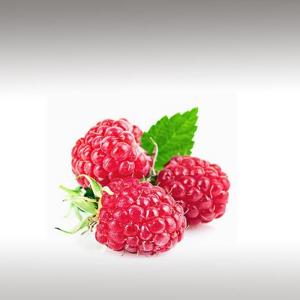

Rubus Idaeus (Raspberry, also called red Raspberry or occasionally as European Raspberry to distinguish it from other Raspberries) is a red-fruited species of Rubus native to Europe and northern Asia and commonly cultivated in other temperate regions. A closely related plant in North America.
The carrier oil is obtained from Red Raspberry Seeds by first turning the seeds into flour and then cold pressing this to yield an orange / yellow oil with a delicate aroma. Having a bright gold to reddish color, red Raspberry Seed oil is valuable for skin applications.
Red Raspberry Seed oil is a rich source ofpolyunsaturated fats including omega - 3 fatty acids and antioxidant activity, including tocopherols and tocotrienols. Tocopherols are primarily gamma- and alpha- tocopherol, this oil is low in saturated fat.
Red Raspberry Seed oils contains high proportion of alpha and gamma tocopherols (Vitamin E), vitamin A and omega - 6 fatty acids.
The typical fatty acid profile is: 1 - 4% palmitic acid; 2% stearic acid; 10 - 14% oleic acid; 50 - 62% linoleic acidand 21 - 29% linolenic acid.
It is an extremely stable lipid that has redefined performance and stability standards for oils rich in essential fatty acids.
Red Raspberry Seed oil is an excellent free radical scavenger and antioxidant, and a rich source of alpha and gamma tocopherolas well as y-tocopherol, along with carotenoides (Vitamin A).
The carrier oil is obtained from Red Raspberry Seeds by first turning the seeds into flour and then cold pressing this to yield an orange / yellow oil with a delicate aroma. Having a bright gold to reddish color, red Raspberry Seed oil is valuable for skin applications.
Red Raspberry Seed oil is a rich source ofpolyunsaturated fats including omega - 3 fatty acids and antioxidant activity, including tocopherols and tocotrienols. Tocopherols are primarily gamma- and alpha- tocopherol, this oil is low in saturated fat.
Red Raspberry Seed oils contains high proportion of alpha and gamma tocopherols (Vitamin E), vitamin A and omega - 6 fatty acids.
The typical fatty acid profile is: 1 - 4% palmitic acid; 2% stearic acid; 10 - 14% oleic acid; 50 - 62% linoleic acidand 21 - 29% linolenic acid.
It is an extremely stable lipid that has redefined performance and stability standards for oils rich in essential fatty acids.
Red Raspberry Seed oil is an excellent free radical scavenger and antioxidant, and a rich source of alpha and gamma tocopherolas well as y-tocopherol, along with carotenoides (Vitamin A).
Submitted by OperaDreamhouse (August 1, 2014)
Baobab Seed Oil (Adansonia Digitata) ☸ Base oils ☸ Base / General
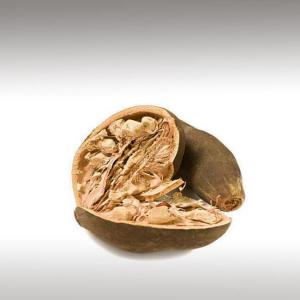

Adansonia Digitata is the most widespread of the Adansonia species on the African continent, found in the hot, dry savannahs of Sub-Saharan Africa. It also grows, having spread secondary to cultivation, in populated areas. English common names for the Baobab include Dead-Rat tree (from the appearance of the fruits), Monkey-bread tree (the soft, dry fruit is edible), Upside-Down tree (the sparse branches resemble roots).
The trees usually grow as solitary individuals, and are large and distinctive trees on the savannah, in the scrub, and near settled areas, with some large individuals living to well over a thousand years of age. The tree bears very large, heavy, white flowers. The fruits are filled with pulp that dries, hardens, and falls to pieces which look like chunks of powdery, dry bread. The African Baobab's fruit is 15 to 20 centimetres. It contains 50% more calcium than spinach, is high in antioxidants, and has three times the Vitamin C of an Orange. It is sometimes called a superfruit.
Baobab tree whose seeds make an oil that is luscious and has a wonderful aroma. Called "The Tree of Life", this massive tree lives to be well over 100 years old - some sources saying 500 years.
The aroma is mild and nutty, and is a golden liquid. The consistency of baobab oil is rich and thick.
Baobab oil has a high essential fatty acid content including oleic, linoleic, and linolenic. Oleic acid is a good skin penetration enhancer.Linoleic and linolenic fattyacids help maintain the health of cell membranes.
The trees usually grow as solitary individuals, and are large and distinctive trees on the savannah, in the scrub, and near settled areas, with some large individuals living to well over a thousand years of age. The tree bears very large, heavy, white flowers. The fruits are filled with pulp that dries, hardens, and falls to pieces which look like chunks of powdery, dry bread. The African Baobab's fruit is 15 to 20 centimetres. It contains 50% more calcium than spinach, is high in antioxidants, and has three times the Vitamin C of an Orange. It is sometimes called a superfruit.
Baobab tree whose seeds make an oil that is luscious and has a wonderful aroma. Called "The Tree of Life", this massive tree lives to be well over 100 years old - some sources saying 500 years.
The aroma is mild and nutty, and is a golden liquid. The consistency of baobab oil is rich and thick.
Baobab oil has a high essential fatty acid content including oleic, linoleic, and linolenic. Oleic acid is a good skin penetration enhancer.Linoleic and linolenic fattyacids help maintain the health of cell membranes.
Submitted by OperaDreamhouse (August 1, 2014)
Page 34 of 48

